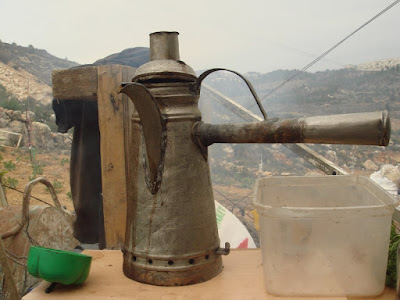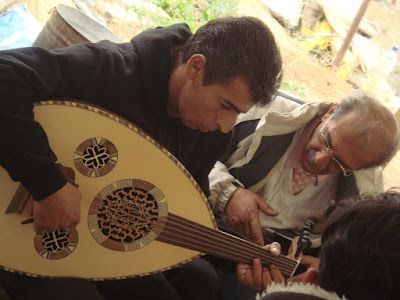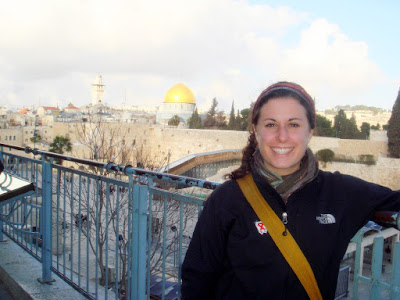ANYWAY, the exhibit that was there today is called Heart Quake. You can click on the link to read more about it, but the general idea of most of the art is to get a dialogue happening about the effects of conflict on society and the individual. Many of the pieces were powerful.
Three that stood out to me the most:
It was me/Diary - this piece was a giant wall mural that looks like a diary. Each of the entries was written in the frist person:
"This work is a unique diary created by Daniela Comani. Curator Inke Arns notes that 365 journal entries, written in the first person, report important events that occurred in the twentieth century. The fictitious narrator signs the agreement for dismantlement of the Warsaw Pact on March 31, is killed on June 2 by police bullets during a demonstration in East Berlin, blocks the path of a tank on Tienamen Square in Beijing two days later, and assaults a Vietnamese trader on the streets of Hoyerswerda in Germany on September 17. Comani has written a diary of the twentieth century as though all the events depicted happened to her. From one day to the next, from one report to the next, she is first a passive witness, then a political activist, later - a victim, and then again goes on to commit crimes. Thus she seems to instigate these historic events."Beach, 2006 -
This piece was by far the most powerful to me, mainly because before I came to Jerusalem, the conflict in Gaza was SO heavily on my heart and mind - and then when I moved here, I couldn't see signs of it ANYWHERE - life just seemed to be going on as normal.. This piece really spoke to me about that phenomenon and its lack of reality:
"Guli Silberstein’s work presents a personal report in the form of an unfocused television broadcast; a stream of images progressively speeding up, portraying a family on a Tel Aviv beach, near to a video work showing a little girl running frantically along a Gaza beach under bombardment, a mere 100 km. away. The work depicts a reality wherein tranquility is transformed momentarily into terror, and the possibilities of the real and the repressed pose questions simultaneously conceptual, existential and moral.
Paradoxically, the observer is drawn to the blurred images, and the more they blur, the greater the sense of confusion and dread over what goes on between Tel Aviv and Gaza, between the flickering narrative and his tempestuous imagination. Silberstein’s cinematic language, the deliberate disorder injected into the development of the action, fills us with a growing sense of danger and dread."




















































